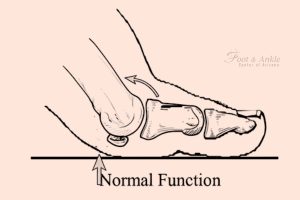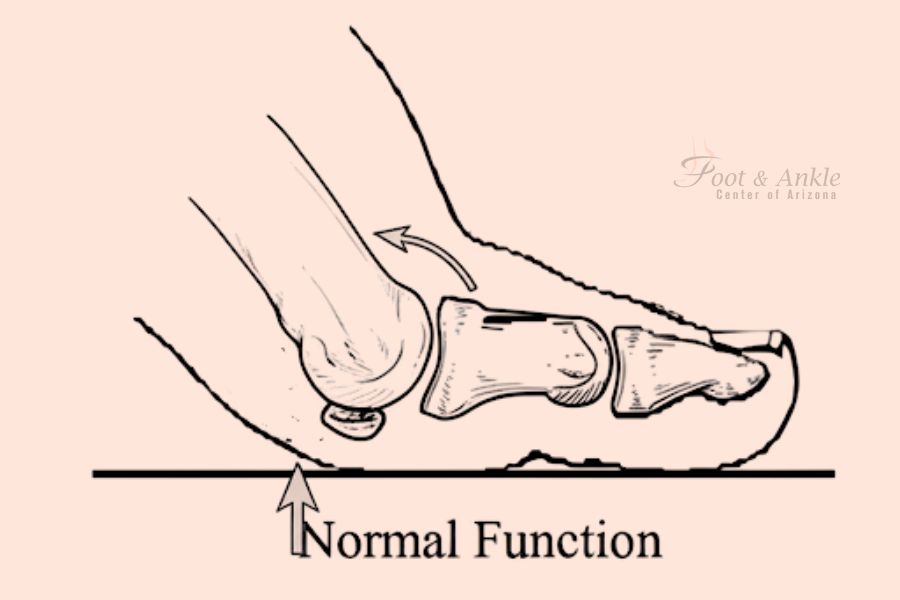What Is Hallux Rigidus?
Hallux rigidus is a medical issue affecting the joint at the base of the big toe, manifesting as pain and stiffness. Over time, bending the toe becomes more difficult. The term “hallux” denotes the big toe and “rigidus” signifies its lack of movement—hence, the toe is rigid. This condition is a specific type of degenerative arthritis.
The consequences of hallux rigidus can be substantial, impacting daily activities like walking, crouching, or climbing, and can become quite debilitating. It is often mistaken for a bunion, which also involves the same joint but differs in both presentation and treatments required.
The progression of hallux rigidus leads to a decrease in the big toe’s motion. When movement is somewhat limited, it’s referred to as hallux limitus. As the condition progresses, the range of motion may diminish completely, resulting in a “frozen joint”.
Causes
The common culprits for hallux rigidus include incorrect biomechanics and structural abnormalities of the foot, which can lead to osteoarthritis in the big toe’s joint—a wear-and-tear type of arthritis. It frequently occurs in those with foot defects that alter foot and big toe function, such as fallen arches or excessive inward ankle rolling (pronation). Familial predisposition can play a role, with certain foot types being more prone to the condition. Overuse, particularly in activities or occupations that stress the big toe, or direct injuries, like stubbing, can lead to this disorder. It can also stem from inflammatory diseases like rheumatoid arthritis or gout. A foot and ankle surgeon is equipped to identify the cause and advise on the optimal treatment course.
Symptoms
Early Warning Signs:
- Use-related pain and stiffness in the big toe (walking, bending, etc.)
- Pain exacerbation by cold, damp conditions
- Activity-related challenges (e.g., running or squatting)
- Swelling and inflammation at the joint
Advanced Symptoms:
- Continuous pain, even at rest
- Bone spur-induced shoe-fitting difficulties
- Altered gait causing pain in the hip, knee, or lower back
- Severe cases may lead to limping
Diagnosis
Prompt diagnosis facilitates easier management. It’s best to visit a foot and ankle surgeon upon noticing symptoms to avoid complications like bone spurs.
The diagnostic process includes a foot examination and toe mobility assessment. X-rays ascertain the extent of arthritis and identify possible bone spurs or other anomalies.
Nonsurgical Treatment
Early intervention might negate or delay future surgical needs. Hallux rigidus treatment for mild to moderate cases comprises:
- Shoe Alterations. Opt for footwear with ample toe space and consider stiff or rocker-bottom soles.
- Orthotic Devices. Custom-made orthotics may enhance foot functionality.
- Medications. NSAIDs like ibuprofen can help relieve inflammation and pain.
- Injection Therapies. Corticosteroid injections decrease inflammation and alleviate pain.
- Physical Therapy. This may involve ultrasound or other therapeutic modalities to provide temporary symptom relief.
When Is Surgery Needed?
In situations where other treatments fail to mitigate pain, surgery may be the only solution. Various surgical methods exist; the appropriate one will depend on factors such as the severity of the deformity, patient age, activity levels, and more. Recovery times will also vary based on the specific surgery performed.




